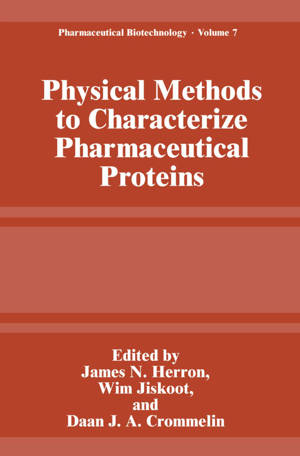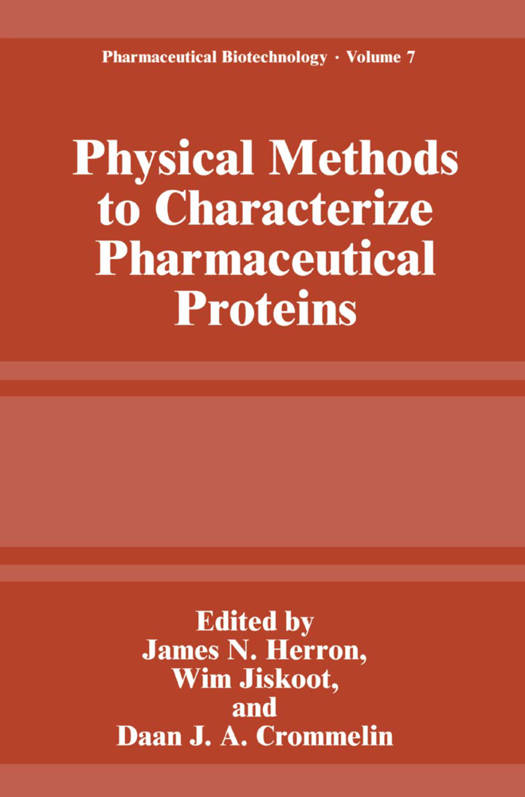
- Afhalen na 1 uur in een winkel met voorraad
- Gratis thuislevering in België vanaf € 30
- Ruim aanbod met 7 miljoen producten
- Afhalen na 1 uur in een winkel met voorraad
- Gratis thuislevering in België vanaf € 30
- Ruim aanbod met 7 miljoen producten
Zoeken
Physical Methods to Characterize Pharmaceutical Proteins
€ 259,45
+ 518 punten
Omschrijving
Proteins are still gaining importance in the pharmaceutical world, where they are used to improve our arsenal of therapeutic drugs and vaccines and as diagnostic tools. Proteins are different from "traditional" low-molecular-weight drugs. As a group, they exhibit a number of biopharmaceutical and formulation problems. These problems have drawn considerable interest from both industrial and aca- demic environments, forcing pharmaceutical scientists to explore a domain previ- ously examined only by peptide and protein chemists. Biopharmaceutical aspects of proteins, e.g., low oral bioavailability, have been extensively investigated. Although all possible conventional routes of ad- ministration have been examined for proteins, no real, generally applicable alter- native to parenteral administration in order to achieve systemic effects has yet been discovered. Several of these biopharmaceutical options have been discussed in Volume 4 of this series, Biological Barriers to Protein Delivery. Proteins are composed of many amino acids, several of which are notorious for their chemical instability. Rational design of formulations that optimize the native structure and/or bioactivity of a protein is therefore of great importance when long shelf life is required, as it is for pharmaceutical products. This issue has also been examined in two prior volumes of this series: Volume 2: Stability of Protein Pharmaceuticals (Part A) and Volume 5: Stability and Characterization of Protein and Peptide Drugs.
Specificaties
Betrokkenen
- Uitgeverij:
Inhoud
- Aantal bladzijden:
- 362
- Taal:
- Engels
- Reeks:
- Reeksnummer:
- nr. 7
Eigenschappen
- Productcode (EAN):
- 9780306450266
- Verschijningsdatum:
- 30/09/1995
- Uitvoering:
- Hardcover
- Formaat:
- Genaaid
- Afmetingen:
- 156 mm x 234 mm
- Gewicht:
- 712 g

Alleen bij Standaard Boekhandel
+ 518 punten op je klantenkaart van Standaard Boekhandel
Beoordelingen
We publiceren alleen reviews die voldoen aan de voorwaarden voor reviews. Bekijk onze voorwaarden voor reviews.










